

By Xie Zongming
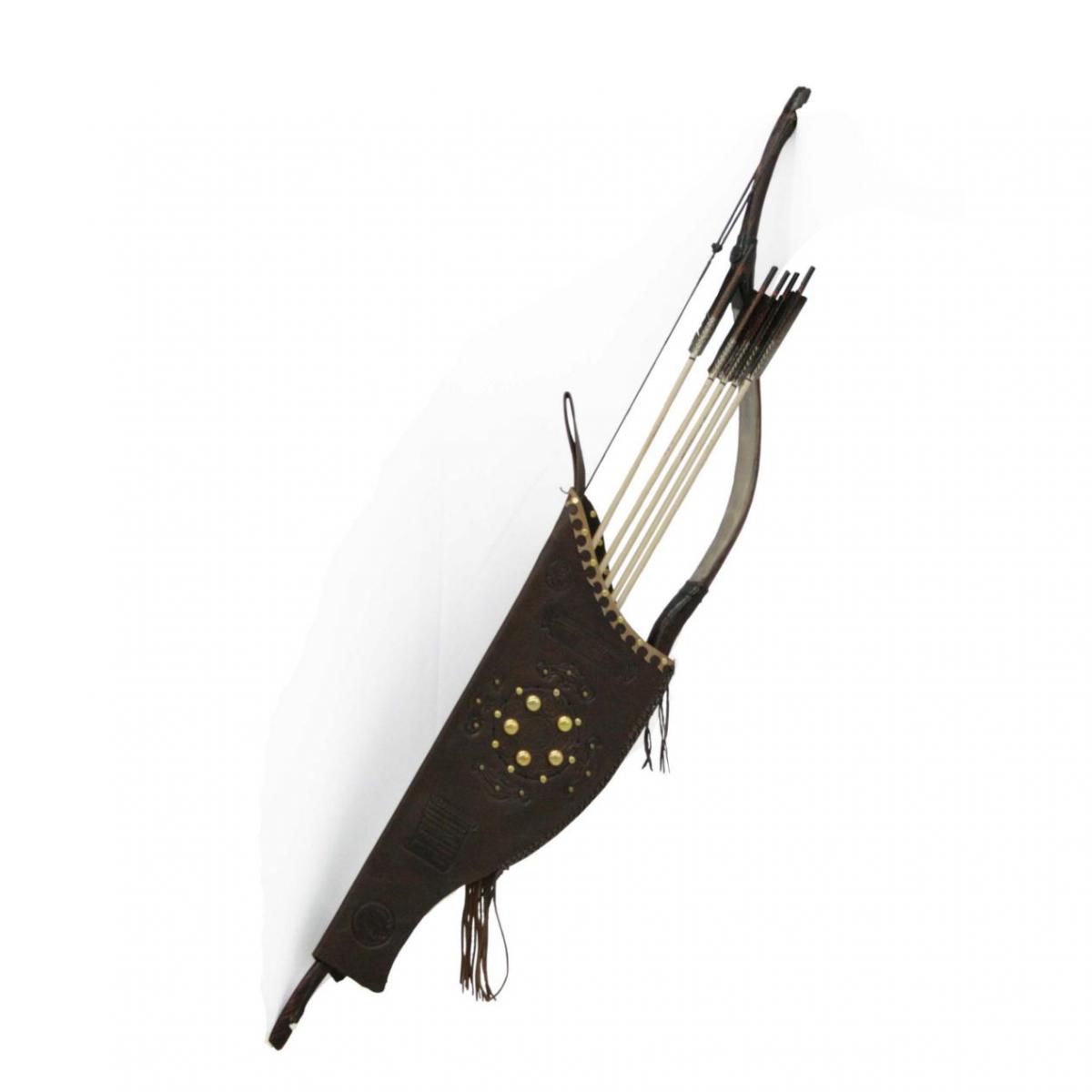
In the North of China, there lives an ethnic group enjoying the name of “people on the
horseback”. They are accepting the convenience brought by modern technology but still hold dear to their traditions. In the Inner Mongolian Autonomous Region, the people succeeding the name of Borjigin, descendants of Genghis Khan, practice traditions of their forefathers like Naadam. However, this inheritance of tradition wasn’t smooth and easy at the beginning. The crucial skill of a Mongolian, archery, was once endangered for the loss of traditional Mongolian Bow making techniques.
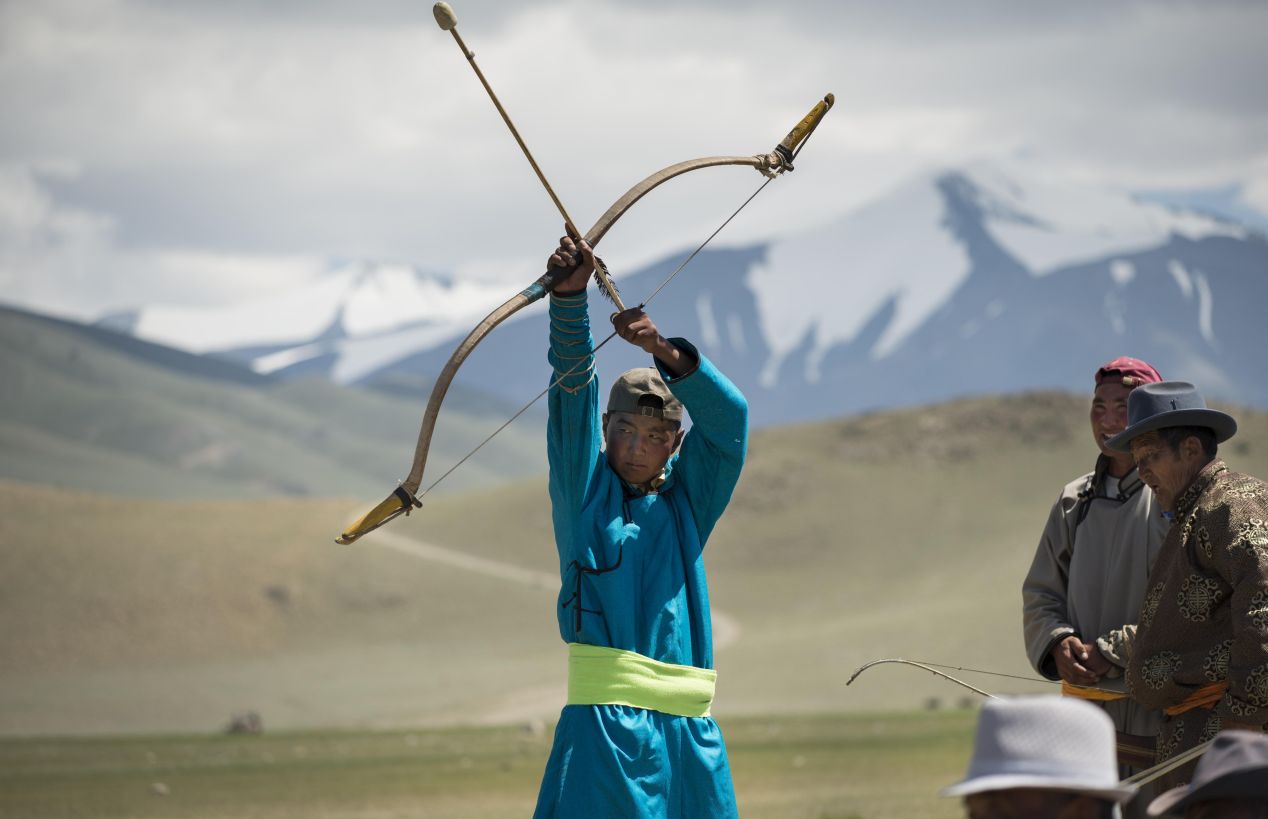
Evolution of Mongolian bow
When referring to the Mongolian bow, the image of a recurved wooden bow is likely to occur to you. The structure can trace back to the 9th century A.D. when a minority group called Khitan (which later became Jurchen) thrived in Northern China. Mongolians, once controlled by Khitan clans, were influenced by Khitan culture and crafts thus made bows of similar structure that have a long drawing distance.
Then around 14th century A.D., the Mongolians became dominant in China and had a connection with countries in Central Asia, for which they learned to put recurves on their bows. The Khitans, who had become the Jurchens, absorbed this technology in their bow making as well. Centuries later, Jurchen people modified their bows based on Mongolian bow. They lengthened the tip of the bow, which strengthened the force endurance of the bow. Also, the Jurchen strengthen the whole structure with thicker materials, which made the bow heavier for infantry archers instead of riders. The Jurchens united their clans with this weapon and called themselves Manchus. This modification helped the Manchus establish the Qing Dynasty (1636-1912) of ancient China, and was seen as the early stage of Manchu Bow. Mongolians, under the reign of the Qing Dynasty, found the Manchu bow’s design powerful and adopted the technology to modified their own bows, which became the Mongolian bow today. From this perspective, the Manchu bow and the Mongolian bow are interrelated, for which they look alike, only that the Mongolian ones are shorter for horseback shooting.
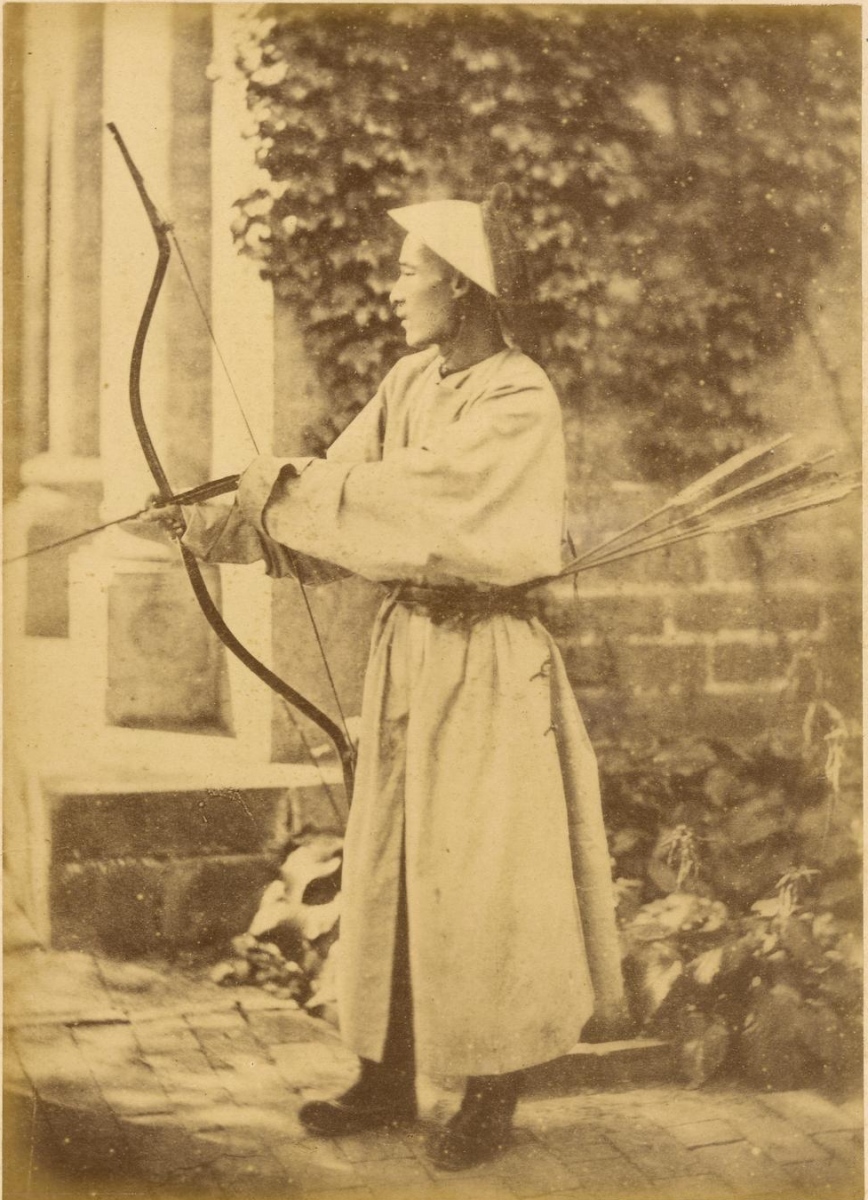
Mongolians use a method called Mongolian draw, in which only the archer’s thumb is involved. To make quicker shots on the horseback, Mongolians (and other East Asian ethics like Han) invented this method. In Mongolian draw, the arrow is released with only the thumb, making the chance of fingers interruption smaller compared to the Mediterranean draw which requires the archer to control the force of 3 fingers and release at the same time. To protect their thumbs and aid the release accuracy, Mongolians use a thumb ring to hitch the string, which later became a kind of fashion accessary in ancient China.
Tips: Thumb rings were the add-on of archery. In the early Qing Dynasty of China, Manchu nobles had to master archery so they often wore a thumb ring. Later, the next generation of nobles made the thumb ring a type of accessary. The thumb ring for archery is made of antler and the accessary ring is made of jade.
Reviving the lost technique
Into the 19th century, bows and arrows were replaced by guns and bullets; the art of wood and feather was covered by the technology of steel and lead. In 1950, Mongolian archers, representing China, still used their traditional bows in international competitions. When modern bows came into China around 1958, the importance of Mongolian bows in the competition was diminished. After 1980 when the old generation of bow makers passed away, the technique had found no one as the inheritor. Because of the requirement of the materials of the bow in the target archery
competitions, Mongolian archers started to use modern bows. These bows are more economical and accessible than traditional Mongolian bows, which take months to make. Besides, these bows are more suitable for standing-still target shooting compared to Mongolian bows. With so many shortcomings, Mongolian bows and bows-making techniques were near extinction.
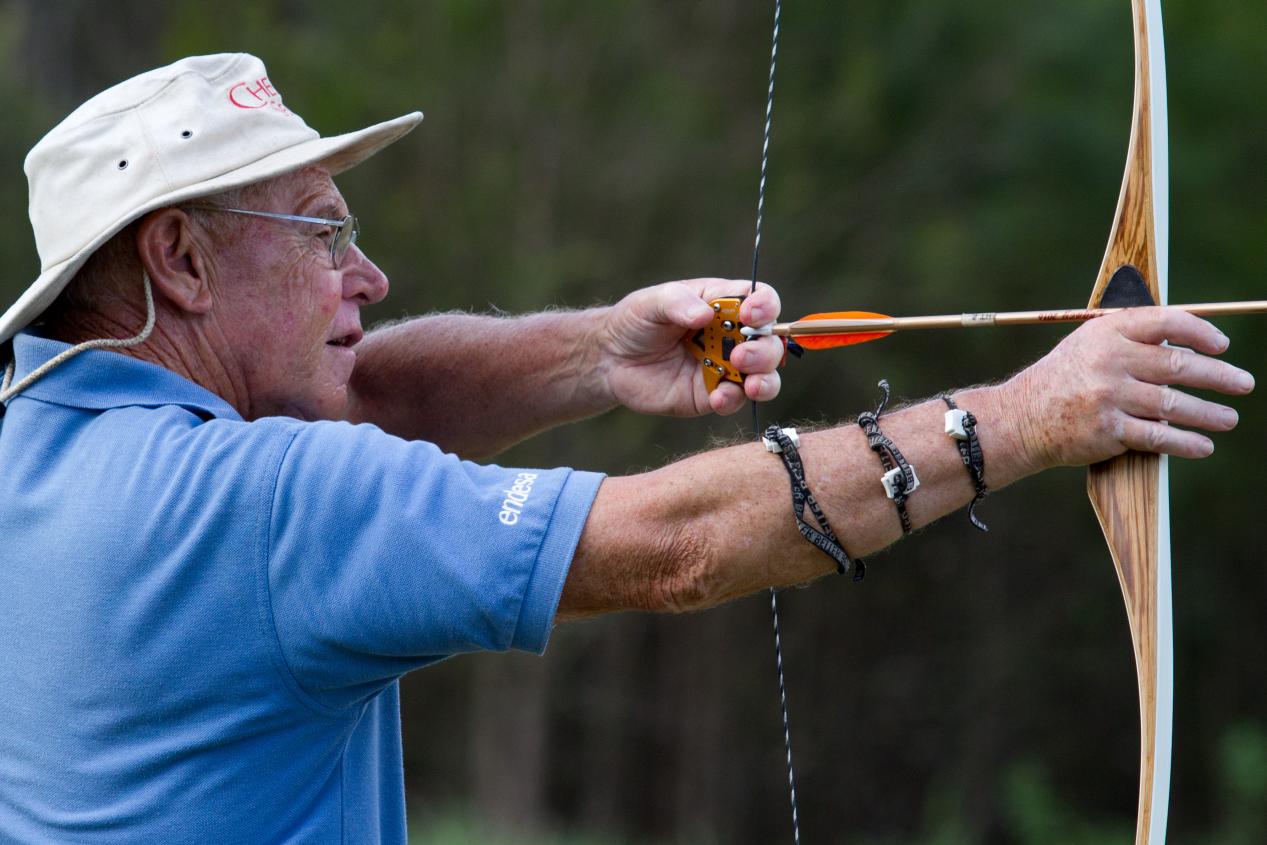
Nuo Min, who was an editor and reporter of Inner Mongolia Radio and Television Station in 1999, went to report the 1999 Naadam Games in Bagatala Sumu, Ongniud Banner. During his trip, he saw a Mongolian bow for the first time in his life. In his report of the Naadam, he dropped by and interviewed an old Mongolian archer, who owns a Mongolian bow of 200-year history as his heirloom. Nuo Min immediately got interested in this special craft. The patterns and structure looked so familiar to his ethnicity yet so strange to his knowing. In 1999 in China, the time when the internet is still new and rare, the only access to information was radio, TV and your bare eyes. For Mongolian bows had gone into extinction since 1980, Nuo Min had to look for information in libraries and archives of the Ethnic Affairs Commission and local Bureau of Sports. There, he had preliminary knowledge about the Mongolian bow.
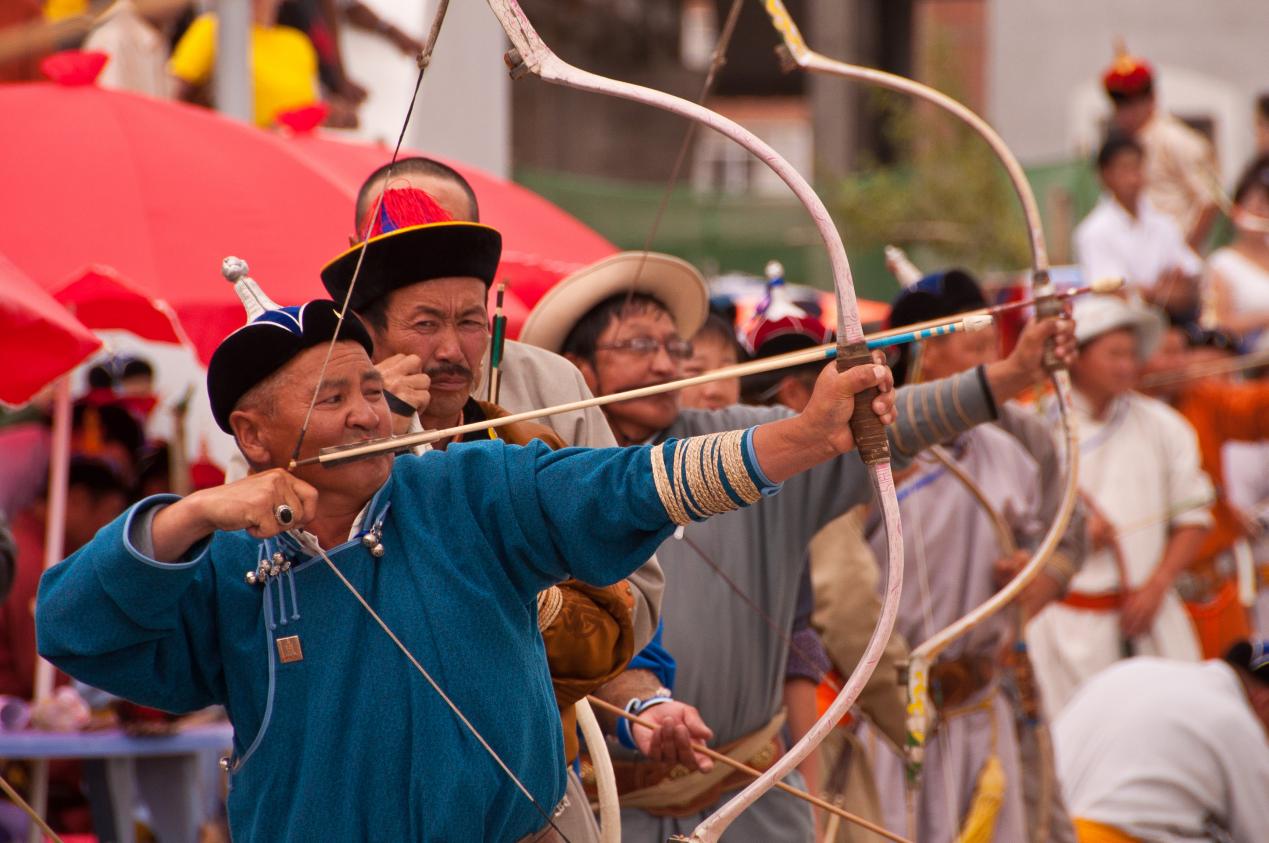
From this point on, he started to try to revive this lost technique. For the next few years, he visited many Mongolian bow scholars, owners, and even fanciers. In this period, he showed extraordinary perseverance and learned about every process of bow making, from materials collecting to bow decorating. When he knew that the bow requires birch bark, he spent years mastering the skill of collecting bark without hurting the tree; when he learned that the foreside of the bow must be reinforced by bull sinews, he bought tens of kilograms of sinews just to find out the optimal kind.
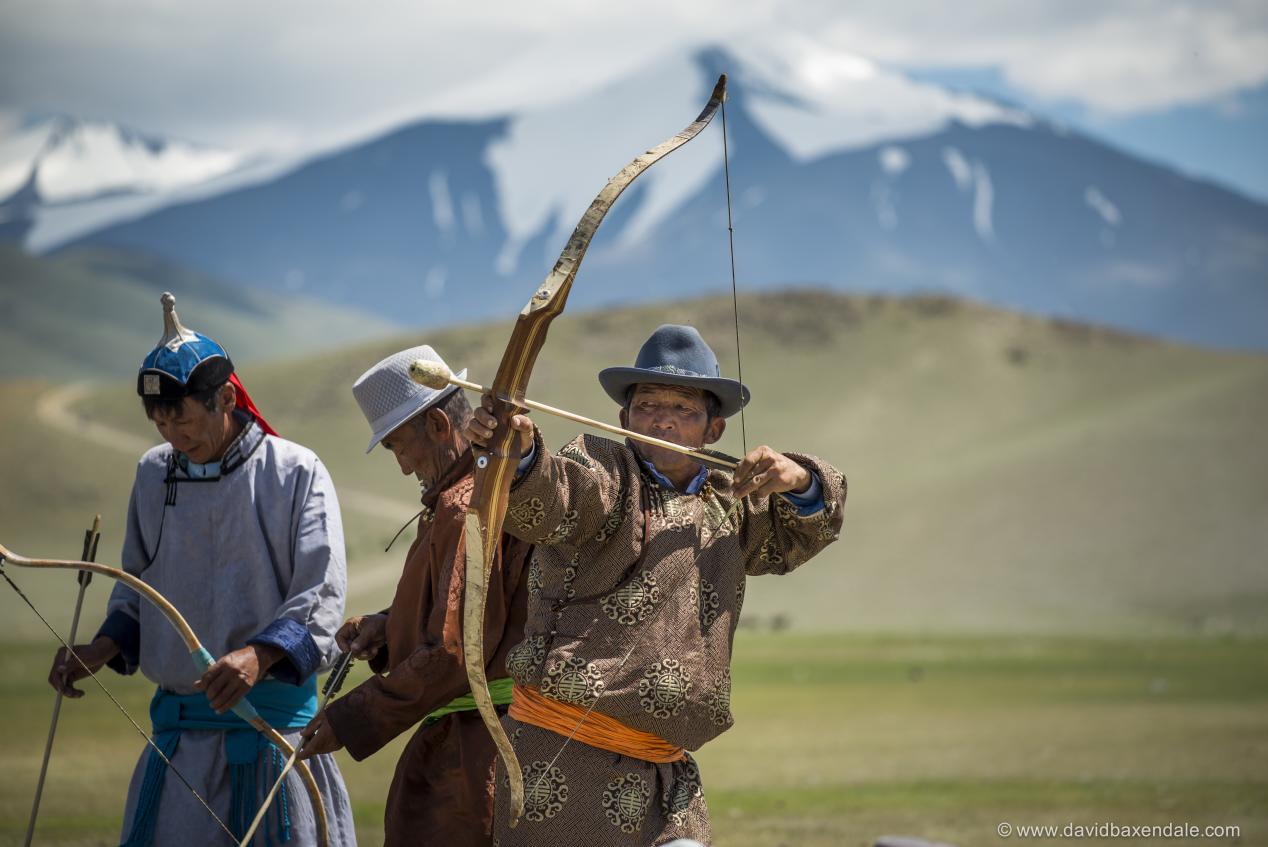
One can achieve anything with this resolve. Finally, in the July of 2007, he restored the technique and made his first Mongolian bow, which was soon bought by a local acrobatics troupe. Later in 2011, he was selected as the inheritor of this technique. All his efforts were proved worthy by the country and the people.
Now, he is planning on spreading and inheriting this technique. According to him, the best way to preserve a tradition is to make it an everyday practice. With his suggestions, traditional archery not only appears in Naadam but also in a brand new competition, Kharvaa. Kharvaa is the word for target archery in Mongolian. Nuo Min worked out the rules of Kharvaa and promoted the training of judges and archers. Currently, Kharvaa has become another sporting event in Inner Mongolia.
En Ke, his apprentice, is now helping Nuo Min with bow making. The reviving of this old technique looks promising in the hands of the descendants of Genghis Khan.
Tips: The Mongolian bow making includes more than 100 processes. The main parts of the bow are made of wood or bamboo, reinforced by bull sinews on the front side and bull horns on the back. The parts are combined with animal glue. Because of these materials, these kinds of bows are called biocomposite bow.
桂ICP备14000177号 Copyright@2006-2013 Guangxi China-ASEAN Panorama Magazine Agency Co., Ltd. All Rights Reserved